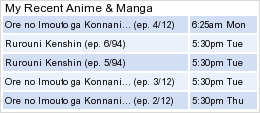Here are my suggested corrections to your paper (minus Kerm's proposed corrections):
1. "The most important thing in a CPU is the transistors, but transistors are worthless unless they are organized in logical arrangements known as GATES." not true (also, the phrase you're looking for is logic gates)
2. "Gates control what happens to two ( or more ) signals." Could use a better definition
3. "They are exclusive." spell out Exclusive OR and Exclusive NOR
4. "A bubble after a symbol means to make it a reverse." ...? A bubble on an input or output of a logic gate inverts the signal
5. "But if you put a bubble on the semi-circle on the wire coming out," it's not on the wire
6. "The gates will deal with the code by moving the current to the place referenced by the code." Not sure if "moving current to the place referenced by the code" is the best way to explain this...
7. You never defined what an ISA was
8. An ISA basically defines the instructions used in a CPU; the implementation of that would be the microarchitecture
9. "This must be handled by the program run into the CPU." run by the CPU
10. No apostrophe on "CPUs"
11. In regards to Kerm's #9, read up on propagation delays and critical paths, then re-write that block of text
12. Conclusion?
I'm a bit confused as to your usage of these statements. Can we see them in context (as in, is there another draft of your paper we haven't seen)? Anyways, here are my thoughts so far:
1. ...? Not sure what you're trying to explain here.
2. Way too much of a generalization (not to mention inaccurate)
3. A "good register size" is one large enough to hold the values you're manipulating
4. See #2
5. See #1
6. You can drive an LED display without FFs (also, driving each individual pixel with its own dedicated FF would be insane.)
1. "The most important thing in a CPU is the transistors, but transistors are worthless unless they are organized in logical arrangements known as GATES." not true (also, the phrase you're looking for is logic gates)
2. "Gates control what happens to two ( or more ) signals." Could use a better definition
3. "They are exclusive." spell out Exclusive OR and Exclusive NOR
4. "A bubble after a symbol means to make it a reverse." ...? A bubble on an input or output of a logic gate inverts the signal
5. "But if you put a bubble on the semi-circle on the wire coming out," it's not on the wire
6. "The gates will deal with the code by moving the current to the place referenced by the code." Not sure if "moving current to the place referenced by the code" is the best way to explain this...
7. You never defined what an ISA was
8. An ISA basically defines the instructions used in a CPU; the implementation of that would be the microarchitecture
9. "This must be handled by the program run into the CPU." run by the CPU
10. No apostrophe on "CPUs"
11. In regards to Kerm's #9, read up on propagation delays and critical paths, then re-write that block of text
12. Conclusion?
adept wrote:
"OK. Check these for stupid errors:
-A 8 number opcode is comparable with 8 pushbuttons.
-There are typically an equal number of inputs as outputs.
-A good register size for a simple CPU (or half-adder if you must), is 8 bits with 4 registers (for opcode, number 1, number 2, and answer.
-A dual core CPU is kind of like the "pushbuttons" being multiplied by 2 within the same CPU unit, along with the # of transistors.
-The "pushbuttons" are processed with gates to determine the number, which is connected to a pin with the same number, that triggers a circuit, to complete the command. (If I must, I'll make a flow-chart of the structure I'm suggesting. I'm probably will do it for the Science Fair anyway.)
-Flip-flops can be used to drive a simple LED display alone. One for each "pixel" that the CPU points to in order to make a letter, or phrase."
-A 8 number opcode is comparable with 8 pushbuttons.
-There are typically an equal number of inputs as outputs.
-A good register size for a simple CPU (or half-adder if you must), is 8 bits with 4 registers (for opcode, number 1, number 2, and answer.
-A dual core CPU is kind of like the "pushbuttons" being multiplied by 2 within the same CPU unit, along with the # of transistors.
-The "pushbuttons" are processed with gates to determine the number, which is connected to a pin with the same number, that triggers a circuit, to complete the command. (If I must, I'll make a flow-chart of the structure I'm suggesting. I'm probably will do it for the Science Fair anyway.)
-Flip-flops can be used to drive a simple LED display alone. One for each "pixel" that the CPU points to in order to make a letter, or phrase."
I'm a bit confused as to your usage of these statements. Can we see them in context (as in, is there another draft of your paper we haven't seen)? Anyways, here are my thoughts so far:
1. ...? Not sure what you're trying to explain here.
2. Way too much of a generalization (not to mention inaccurate)
3. A "good register size" is one large enough to hold the values you're manipulating
4. See #2
5. See #1
6. You can drive an LED display without FFs (also, driving each individual pixel with its own dedicated FF would be insane.)
















